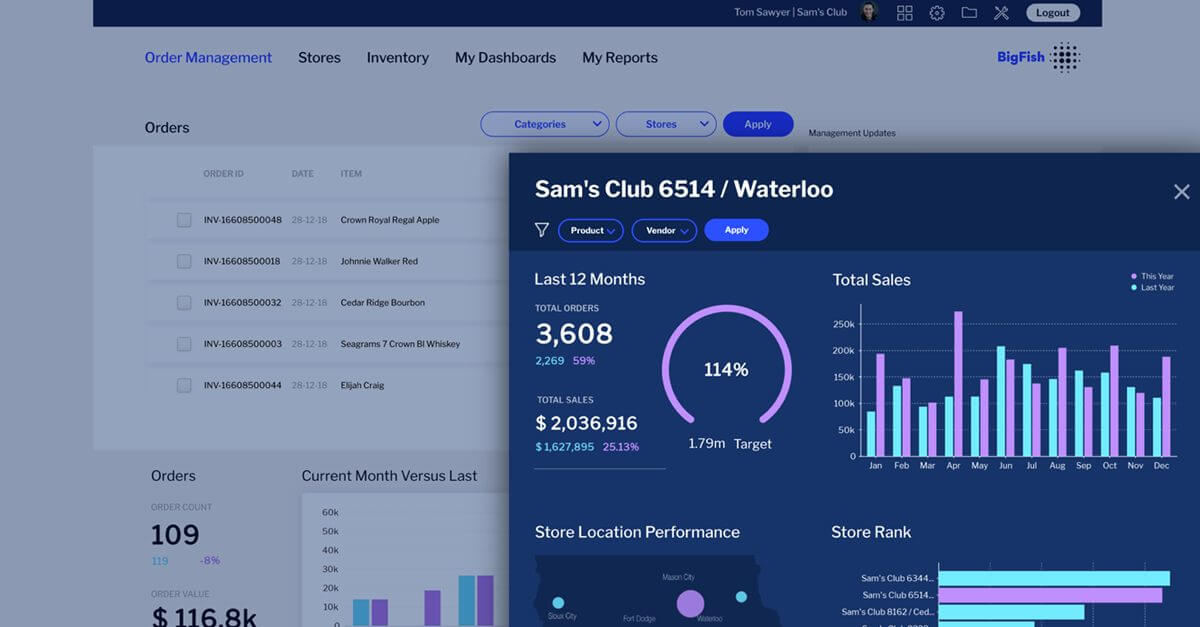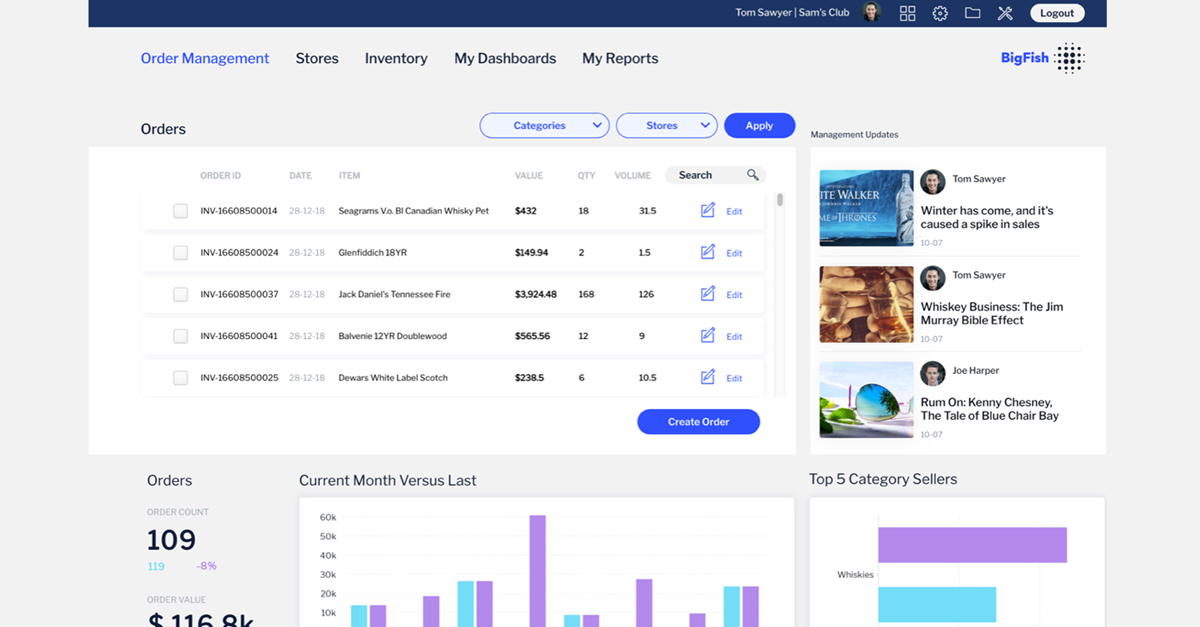
Build or Buy Embedded Analytics: What's the difference?
Companies nowadays are well aware of the importance of embedded analytics when it comes to being data-driven.
Today, building your own analytics infrastructure into your software applications for your customers is not the only option anymore. There is a growing market of embedded analytics tools that offer purchasable solutions for data analysis.
Embedding analytics using an established business intelligence (BI) solution vendor brings deep capabilities that can be seamlessly integrated with your brand and workflow.
But for many organizations, there is still debate around whether building such analytics capabilities in-house is the better option. Hence, the creation of 'build vs buy' analytics.
Before arguing which approach is better, it's essential to learn about the independent use cases of building vs buying analytics. A comparative analysis of the two methods can give a picture of why to build, and why to buy embedded analytics for your application.
Building vs buying embedded analytics
The difference between building and buying analytics tools, in regards to your application, can be aptly explained as the difference between working hard and working smart. Below, we provide an overview of their differences, and the pros and cons of each.
Building analytics: Overview and use case
An in-house analytics solution is an infrastructure built on top of your existing software. It runs as a part of your software product/application, and requires a dedicated team of data engineers for maintenance, requiring a lot of time, effort and money.
Building solutions find their best usage in organizations having specific requirements that are not time-sensitive. These organizations have dedicated resources that allow them to fully control their data without third-party interference. They work with limited use cases that are not anticipated to grow, hence burdening their resources with modification responsibility.
Pros
- Best-fit for specific use cases: Building your own data analytics software is an optimal solution for particular requirements that available buying solutions cannot meet.
- Customization: Organizations have complete control over their information, allowing them to customize how they want to present their data.
- Can be open-sourced: Businesses can expand their data engineering resources by making their in-house tool open source.
Cons
- Costly: Organizations must endure expensive initial investments when building their own analytics solutions. Other added expenses include development costs, integration overheads, and maintenance costs.
- Longer time to develop: Development of a new tool takes time as data engineers set up and code its infrastructure from scratch. They are required to deliver a rich set of features that cater to specific business requirements.
- Longer time to market: Due to its code-intensive nature, an in-house business analytical tool will take longer to provide a return on investments.
- Distraction from core product: Businesses building their own solutions require input from the entire data team to ensure that their tool meets their requirements., thus shifting their focus from the core product. Giving all the attention to data analytics can cause inefficiencies in their services, e.g., data inconsistencies and errors.
- Limited scalability: Changing customer demands can significantly burden in-house analytics tools. Additional cost overheads and the required time to incorporate these changes are not worth the value provided by them.
- Requires dedicated staff: In-house analytics tools require more than just the involvement of data engineers who can code. Data and business teams have to be dedicated to the development process to make sure the tool meets the company's requirements.
Buying analytics: Overview and use case
Buying data analytics solutions involves outsourcing the tasks of building and maintaining a data visualization tool to third-party companies. Modern analytics tools are constructed to seamlessly embed in your company's software to give the look of a single unified product. These tools are solely dedicated to data analytics and therefore provide high-quality features. The vendors of the tool also manage the integration of future updates.
Embedded analytics solutions find their best usage in organizations with continuously changing business requirements. Such organizations require real-time solutions that impose strict time-to-market deadlines. Buying and embedding an analytics tool provides a high-performance and scalable solution to their resource limitations. Before choosing an embedded BI tool, organizations must consider certain factors to find the perfect match for their business needs.
Pros
- Cost-effective: Buying embedded analytics entirely omits the development costs and maintenance overheads. The vendors of the tool can accommodate any changes with minimal additional costs. With just the initial investment of buying the solution and its integration, you are all set to meet your data needs today and in the future.
- Faster time to market: As their vendors have already developed embedded analytics, they save months of development time and can be set up within days. Your product reaches the market sooner, and your organization can reap its benefits quicker.
- User friendly: Embedded analytics tools provide a simple and user-friendly interface for non-technical users for accessing and visualizing data. They offer custom action-based dashboards to monitor and view data to increase data engagement for better insights.
- Scalability: The developers of embedded analytics provide continuous improvements in their tools to keep up with industry standards, allowing your analytics tool to scale per your changing business requirements. Developers of the tool handle additional features without requiring any significant efforts from your teams.
- White labeling: One of the most elegant features of an embedded BI tool is that it blends with your software to white label the embedded analytics. It means that you are not regulating a separate tool; it is instead embedded just like an in-house solution to provide seamless integration of analytics in your product.
- Increased business efficiency: Since a data team handles the analytics workload, the other teams in your organization can focus on their core objectives for providing efficient results.
- On-going project support: The vendors of embedded analytics tools have dedicated support teams. They are readily available throughout the project’s lifecycle.
Cons
- Overlapping features: Purchasable solutions do not provide a 100% fit for your business needs. You'll find multiple reporting tools providing an overlapping set of features that you cannot get in a single tool. The only option is to buy the closest tool that meets your organization's requirements.
- Uncertain lifetime of analytics tool: Relying on third-party vendors always comes with the risk that they may go out of business.
Why buying analytics is better
To sum it up, the benefits of buying embedded analytics solutions outweigh the benefits of building in-house solutions. A simple return on investment calculation can help you decide which approach is worth adopting. In addition to revenue generation, the data analysis process should be engaging for all teams in an organization, resulting in increased customer retention. At the end of the day, your build vs. buy decision will affect your customer satisfaction.
The choice of building your own data analytics software often comes from the need to control and customize your data analytics. Modern embedded analytics tools like offer dashboard coding that allows customization to your specifications. You can forget about maintaining a separate third-party tool as they seamlessly embed in your software and give the look and feel of in-house analytics.
Today’s evolving data industries demand future-proof innovations to keep up with ever-changing customer demands. In-house analytics tools are limited in their usage and struggle to accommodate growing business needs. Embedded analytics address these shortcomings of an in-house analytics tool to deliver value in accordance with the latest industry standards effectively.
Yellowfin Embedded Analytics: A Product Walkthrough Guide
Discover just how seamless and comprehensive the Yellowfin embedded analytics suite is, and why it's a better option vs building analytics.

